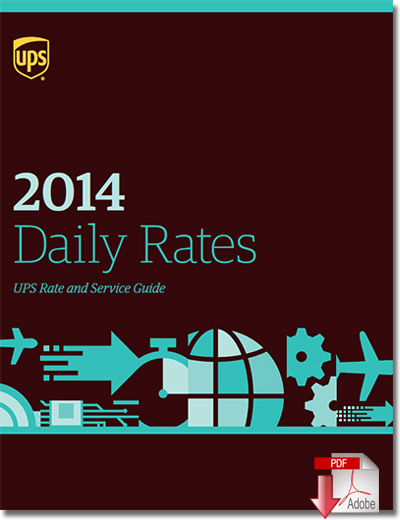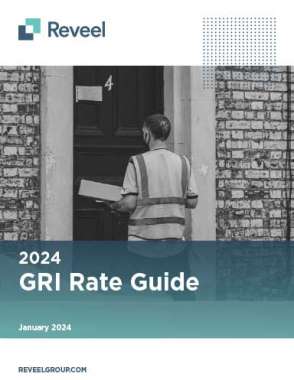UPS Rolls Out Dimensional Pricing Changes Effective December 2014
Following the lead of its chief competitor, FedEx, Atlanta-based transportation and logistics bellwether UPS today said that effective December 29, it will also adopt dimensional pricing in the United States.
Company officials said that dimensional weight will be used to calculate the billable weight of a shipment on all UPS Ground services and UPS Standard to Canada packages.
Press Release: UPS Announces Dimensional Weight Changes
This type of pricing is already deployed by UPS for both its domestic and international air services, as well as its UPS Standard to Mexico ground services, UPS Ground packages, and UPS Standard to Canada for packages that are 3 cubic feet or larger.
“UPS has been researching the potential expansion of dimensional-weight pricing for a number of years because it enables us to more appropriately align rates with costs which are influenced by both the size and weight of packages,” said Alan Gershenhorn, UPS executive vice president and chief commercial officer, in a statement.
UPS made its decision to go with dimensional pricing in early May for its FedEx Ground and FedEx Freight offerings, with the changes taking effect on January 1, 2015.
For FedEx Ground, the company said it will apply dimensional weight pricing to all shipments moved via FedEx Ground, as opposed to its current method of applying dimensional weight pricing to packages that measure three cubic feet or more. FedEx defines dimensional weight pricing as “a common industry practice that sets the transportation price based on package volume–the amount of space a package occupies in relation to its actual weight.”
When FedEx and UPS announced rate changes for 2011 in late 2010, they both announced they would be implementing a change to the dimensional weight volumetric divisor, which is used to tally the amount of space allocated to a specific shipment. It is derived by multiplying a shipments length, width, and height, and then dividing that figure by its weight and then dividing it by 166, with the shipper being charged the greater of the result of the actual weight or the dimensional weight as determined by the aforementioned formula.
In 2010, FedEx implemented a change to the dimensional weight volumetric divisor from 194 to 166 for U.S. domestic services. And like FedEx, UPS made changes to its dimensional weight volumetric divisor, with U.S. Domestic UPS Air Services and U.S. Domestic UPS Ground Services (for packages 3 cubic feet or larger) changing from 194 to 166, among others.
Parcel industry experts told Logistics Management at this time that when these changes were made they would be a major hit to shippers, explaining it is strictly margin improvement as the carriers do not provide additional work or additional capacity investments while receiving more incremental revenue on the same shipments handled.
In explaining its rationale for making the decision to go with dimensional pricing for these respective product offerings, UPS officials noted that recent e-commerce shipping trends have brought about a decrease in package density, citing how the package weight compared to the physical exterior dimension is declining. And it added that this trend, in turn, causes cargo space to be less efficiently utilized and results in a higher cost per package. Through dimensional pricing, UPS said shippers will seek to optimize their packaging practices, which will reduce excess packaging materials and overall package sizes, leading to related reductions in fuel use, vehicle emissions and transportation costs.
“This is a very big change in pricing,” said Jerry Hempstead, president of Orlando, Florida-based parcel consultancy Hempstead Consulting. “There is no additional cost for the carrier. There is no additional service they are adding. They are just going to charge more for that which they have been doing for years. This is a pure yield improvement move. All the revenue should drop to the bottom line as profits. All that the carrier needs to do is a minor programming change to eliminate the current exemption and apply the [dimensional pricing] rules to all packages. Keep in mind that most ground shipments are under 10 pounds and it’s this part of the pricing matrix that this move is directed at.”
Related: Shippers Wait for Impact of FedEx Ground Pricing Changes and Next Move for UPS
While these respective pricing changes will improve profitability for the duopoly of FedEx and UPS, Hempstead pointed out that for those large shippers with large ground discounts, where the lower weight cells bump up against the minimum charge––either published or negotiated––the impact will be somewhat muted but not to a huge degree.
What’s more, Hempstead explained how shippers are notorious for overpacking light weight packages, partly to protect them from the handling that goes on in the carriers hubs and partly out of convenience. And to modify this behavior is going to take a lot of hard work on the part of shippers and for some the deployment of more sophisticated packaging equipment to better associate the size of the box to the size of the item being shipped, he said.
“Shippers for the most part are absent of data on the dimensions of packages that go out the door that are currently exempted. Its going to take boots on the ground out on the shipping line to audit and estimate how much this is going to cost a shipper over and above what they are going to be hit with in the annual general rate increase (GRI),” he commented. “Sophisticated shippers may be able to coax a dilution analysis out of their carrier rep for their particular book of business but I don’t see the carriers being very cooperative in sharing the financial impact to their customers.”
The move to dimensional pricing is a result of physics—and the explosive growth in online commerce. Currently about 9 percent of all retail sales are handled on the internet, and that percentage is growing . E-commerce is growing at an estimated 15 percent annually.
Related: How New Dimensional Weight Pricing Will Impact Ecommerce Shippers?
When the holiday season delivery snafu occurred late last year, both FedEx and UPS were found woefully short of capacity. They did not have enough airplanes to handle extra loads. And unless things change in terms of packaging, they will not have enough small parcel vans to handle the growing B2C online demands.
And it’s only going to get worse. Amazon is toying with the idea of offering same-day delivery options (at a price) to its customers. The online retailing giant, partially in reaction to the Christmas foul-ups by UPS and FedEx, is even experimenting with operating its own fleet of delivery vans in high-density metropolitan areas such as San Francisco and other cities.
These pricing changes serve as a retaliatory strike against shippers. The small package giants have been trying to nudge shippers for years into more sensible packaging. But years and tons of bubble wrap later, shippers still are accustomed to lacing their packages of i-phones and other small electronics is larger-than-necessary boxes.
This over-packaging trend eats up cubic capacity in trucks—at little or no cost to shippers. Up until now, the cost of moving a five-pound shipment was essentially the same whether it came in a larger box or not. Until now, distance and weight (and the shipper’s highly negotiable rate discount) were the prime factors in determining a shipment’s cost.
But no more. Under the new dimensional pricing guidelines, shipment costs a five-pound package of toilet paper could rise as much as 42 percent for a “Zone 1” move, or a delivery of less than 250 miles.
“What has happened over the past 10 years or so is that deliveries to homes have risen from 20 percent to 44 percent for UPS,” said Satish Jindel, president of SJ Consulting, with B2C customers often lured by so-called “free shipping” on the Internet. Of course, the shipping is not actually free. The cost of shipping is simply rolled into the overall cost of the product, Jindel said. “As a result of this free shipping insanity, a lot of stuff being shipped cannot be justified any longer,” he said. “A 30-pack roll of toilet paper weighs five pounds. But it should be charged at 25 pounds because of space it takes up.”
Cubic space is vital both on line-hauls and local deliveries. That’s because trucks and vans often “cube out,” or run out of useful space, before they reach their overall weight limits.
That results in FedEx and UPS buying and operating more expensive trucks and vans to handle what essentially is the same amount of revenue-producing freight.
Shippers Wait for Impact of FedEx Ground Pricing Changes and Next Move for UPS














